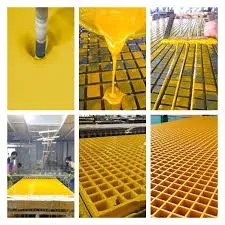
-
 Afrikaans
Afrikaans -
 Albanian
Albanian -
 Amharic
Amharic -
 Arabic
Arabic -
 Armenian
Armenian -
 Azerbaijani
Azerbaijani -
 Basque
Basque -
 Belarusian
Belarusian -
 Bengali
Bengali -
 Bosnian
Bosnian -
 Bulgarian
Bulgarian -
 Catalan
Catalan -
 Cebuano
Cebuano -
 China
China -
 China (Taiwan)
China (Taiwan) -
 Corsican
Corsican -
 Croatian
Croatian -
 Czech
Czech -
 Danish
Danish -
 Dutch
Dutch -
 English
English -
 Esperanto
Esperanto -
 Estonian
Estonian -
 Finnish
Finnish -
 French
French -
 Frisian
Frisian -
 Galician
Galician -
 Georgian
Georgian -
 German
German -
 Greek
Greek -
 Gujarati
Gujarati -
 Haitian Creole
Haitian Creole -
 hausa
hausa -
 hawaiian
hawaiian -
 Hebrew
Hebrew -
 Hindi
Hindi -
 Miao
Miao -
 Hungarian
Hungarian -
 Icelandic
Icelandic -
 igbo
igbo -
 Indonesian
Indonesian -
 irish
irish -
 Italian
Italian -
 Japanese
Japanese -
 Javanese
Javanese -
 Kannada
Kannada -
 kazakh
kazakh -
 Khmer
Khmer -
 Rwandese
Rwandese -
 Korean
Korean -
 Kurdish
Kurdish -
 Kyrgyz
Kyrgyz -
 Lao
Lao -
 Latin
Latin -
 Latvian
Latvian -
 Lithuanian
Lithuanian -
 Luxembourgish
Luxembourgish -
 Macedonian
Macedonian -
 Malgashi
Malgashi -
 Malay
Malay -
 Malayalam
Malayalam -
 Maltese
Maltese -
 Maori
Maori -
 Marathi
Marathi -
 Mongolian
Mongolian -
 Myanmar
Myanmar -
 Nepali
Nepali -
 Norwegian
Norwegian -
 Norwegian
Norwegian -
 Occitan
Occitan -
 Pashto
Pashto -
 Persian
Persian -
 Polish
Polish -
 Portuguese
Portuguese -
 Punjabi
Punjabi -
 Romanian
Romanian -
 Russian
Russian -
 Samoan
Samoan -
 Scottish Gaelic
Scottish Gaelic -
 Serbian
Serbian -
 Sesotho
Sesotho -
 Shona
Shona -
 Sindhi
Sindhi -
 Sinhala
Sinhala -
 Slovak
Slovak -
 Slovenian
Slovenian -
 Somali
Somali -
 Spanish
Spanish -
 Sundanese
Sundanese -
 Swahili
Swahili -
 Swedish
Swedish -
 Tagalog
Tagalog -
 Tajik
Tajik -
 Tamil
Tamil -
 Tatar
Tatar -
 Telugu
Telugu -
 Thai
Thai -
 Turkish
Turkish -
 Turkmen
Turkmen -
 Ukrainian
Ukrainian -
 Urdu
Urdu -
 Uighur
Uighur -
 Uzbek
Uzbek -
 Vietnamese
Vietnamese -
 Welsh
Welsh -
 Bantu
Bantu -
 Yiddish
Yiddish -
 Yoruba
Yoruba -
 Zulu
Zulu
frp valve
Understanding FRP Valves Structure, Function, and Applications
Fiber Reinforced Plastic (FRP) valves have emerged as a groundbreaking solution in various industries, thanks to their impressive strength, lightweight nature, and excellent resistance to corrosion. As industries evolve and demand more efficient and durable components, understanding the structure, function, and applications of FRP valves becomes increasingly important.
What are FRP Valves?
FRP valves are constructed using a composite material that combines plastic with reinforcing fibers, typically glass or carbon. This unique combination offers enhanced mechanical properties compared to standard plastic or metal valves. The fibers provide added strength and rigidity, while the plastic serves as a protective matrix that helps resist chemical corrosion. This makes FRP valves ideal for applications in harsh environments where traditional materials may fail.
Structure of FRP Valves
The structure of an FRP valve can be divided into several key components
1. Body The body is the main component that houses the fluid and withstands pressure. It is typically molded from a composite material designed to provide excellent resistance to chemicals and temperature extremes.
2. Seals and Gaskets These are crucial for ensuring that the valve does not leak. FRP valves often utilize elastomeric materials that offer both chemical resistance and flexibility.
3. Bonnet The bonnet holds the valve’s actuator or operating mechanism and is similarly constructed to withstand high pressure and resist the elements.
4. Actuator Depending on the design, FRP valves can be manually operated or fitted with electric or pneumatic actuators to automate the process. These actuators must be compatible with the composite materials to prevent any compatibility issues.
5. Fasteners The components of FRP valves are often secured with specialized fasteners designed to avoid corrosion and ensure longevity.
Functionality of FRP Valves
frp valve

FRP valves serve the primary function of regulating the flow of fluids in a system, whether it be for blocking, directing, or throttling. Their unique composite materials allow them to handle a wide range of pressures and temperatures, making them versatile in their functionality.
The lightweight nature of FRP valves makes them easier to install and maintain. Unlike traditional metal valves, which can be heavy and cumbersome, FRP valves can be handled with less physical strain. This factor greatly reduces overall installation costs and time.
Furthermore, FRP valves are known for their superior resistance to a variety of chemicals, including acids and bases. This chemical compatibility makes them highly suitable for industries such as wastewater treatment, chemical processing, and food manufacturing, where exposure to aggressive substances is common.
Applications
The applications of FRP valves span across numerous industries
1. Chemical Processing In industries where corrosive substances are prevalent, FRP valves provide a reliable solution for managing hazardous materials.
2. Water Treatment FRP valves are extensively used in wastewater treatment plants, where their resistance to rust and corrosion helps maintain system integrity over time.
3. Oil and Gas In the oil and gas sectors, where pipelines may be exposed to harsh chemicals and varying pressures, FRP valves offer durability and reliability.
4. Pharmaceuticals In this industry, the strict standards for hygiene and material compatibility make FRP valves an excellent option for handling various fluids.
5. Food and Beverage The non-corrosive nature of FRP materials allows for safe transport and processing of food products, ensuring compliance with health regulations.
Conclusion
In conclusion, FRP valves are at the forefront of modern valve technologies, offering substantial advantages in terms of strength, weight, and chemical resistance. Their diverse applications across multiple industries underline their importance in contemporary engineering and manufacturing processes. As technology advances, we can expect the development of even more sophisticated FRP valve designs that will continue to meet the ever-increasing demands of various sectors. As industries push towards greater efficiency and sustainability, FRP valves will undoubtedly play a critical role in shaping the future of fluid management systems.









